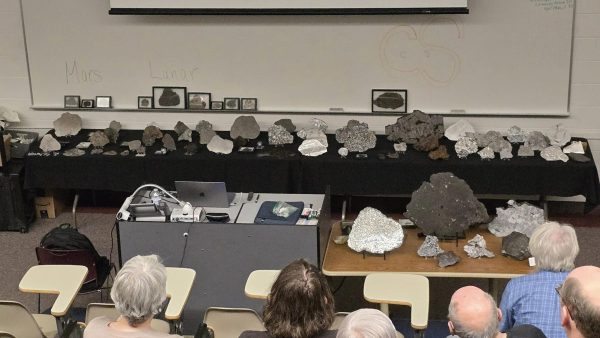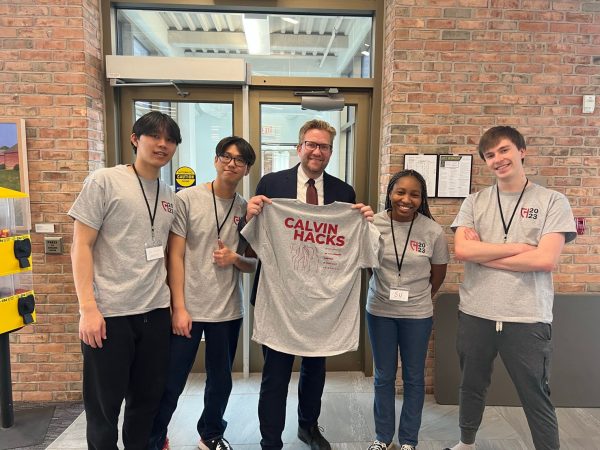Navica app streamlines COVID surveillance testing
Imagine COVID-testing as simple as ordering Chinese take-out with DoorDash. The Navica app makes it that easy.
Abbott laboratories, which produces the rapid antigen tests that Calvin uses for surveillance testing, developed the Navica app, according to Abbott’s website.
According to John Witte, dean of students, Navica protects the information of its users. Calvin Information Technology reviewed the app for compliance with Calvin’s best practices. The only medical information the app collects is the result of the test. None of the volunteers at the testing site have access to any information besides the students’ name and test results.
The app has streamlined the testing process. Students scan in at the testing site when they arrive. After they receive their nasal swab, they immediately leave the testing facility. Results are sent to students’ phones after about 15 minutes, when the test result is complete.
Lauren Henderson, a junior physics and philosophy major, had a good experience during her surveillance test. The process went more quickly than during her surveillance tests in the fall semester.
“There wasn’t a line,” Henderson said. “I just scanned in and got my test. It went super smoothly.”
The COVID-19 response team tests two primary student groups, the general student population and student athletes, according to Witte. For the general student pool, 600 to 800 students are randomly selected for testing each week. Exemptions are available for students enrolled in 4 or less credit hours, those who have been fully vaccinated and individuals who have had COVID-19 within the last 90 days.
Screening tests are available for staff and faculty, although it is not required.
Sports conferences, the MIAA and the NCAA dictate how frequently student athletes receive tests. Athlete testing varies between sports and depends upon whether sports are indoor and outdoor, the level of contact and the amount of travel, Witte told Chimes in an email.
If a student tests positive for COVID-19 using the rapid antigen test, they are referred to Health Services, which conducts a PCR test. PCR test results typically take about two days to come back, according to Witte.
“We do the rapid test to get an immediate result, and have found the BinaxNow test to be extremely reliable in that sense,” said Witte.
About 100 people are involved in the screening process, according to Witte, although only 14 are needed for each 2.5 hour session for the general student population. The athletic department staffs their own screening sessions.
Henderson appreciated the piece of mind that came with the surveillance testing. Over the past two weeks, five total tests have been administered within her apartment.
“It was nice to have the sense of security, knowing that we didn’t have COVID at the point in time,” Henderson said.
“We hope this is a helpful service to our community,” Witte said, “one which could really help people feel more and more confident in the health situation on campus.”







